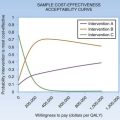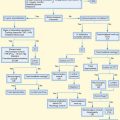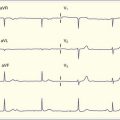123 Postpartum Emergencies
• The most common infection after childbirth is a genital tract infection.
• Because lochia will contaminate a clean-catch specimen in the first 4 to 8 weeks postpartum, urine should be obtained by catheterization in the immediate postpartum period to rule out a urinary tract infection.
• In the immediate postpartum period, an acute abdomen may not be manifested as abdominal rigidity on examination because of laxity of the abdominal wall tissue at this time.
• Leukocytosis cannot be used to help differentiate an infection in the first 2 weeks postpartum because of the physiologic leukocytosis that occurs during pregnancy and delivery.
• Fever is the most important criterion for the diagnosis of postpartum metritis.
Epidemiology
Despite the fact that the first postpartum visit is generally scheduled at 6 weeks, most life-threatening complications arise within the first 3 weeks following delivery and are thus likely to be seen in the emergency department (ED). These complications are primarily related to infection, hemorrhage, pregnancy-induced hypertension, and embolic events.1,2 Infection is one of the top five causes of mortality, with approximately 13% of pregnancy-related deaths between 1991 and 1999 being due to infection.2 In the general population, the incidence of pregnancy-induced venous thromboembolism (VTE) is approximately 0.49 to 1.72 per 1000 deliveries.3 The risk for VTE is five times higher in a pregnant than in a nonpregnant patient. When compared with pregnancy, the risk for VTE is even higher postpartum: a postpartum woman’s risk for VTE is 20- to 80-fold higher in the first 6 weeks, and in the first postpartum week the risk is 100-fold higher.3,4 The majority of deaths from VTE occur during the first 2 weeks of the puerperium, but a significant number of nonfatal events occur 2 to 6 weeks after delivery.4 Approximately 75% of cases of pregnancy-associated VTE are deep vein thrombosis (DVT) and approximately 25% are pulmonary embolism (PE).3
Pathophysiology: the Puerperium
Originally, the puerperium was defined as the period of confinement during and just after birth; it is now generally accepted to mean the 6 weeks after delivery. The puerperium has also been referred to as “the fourth trimester.” This period is marked by multiple physiologic changes (Table 123.1) as the woman returns to the prepregnant state, including healing physically from any trauma during delivery, and adjusts to the many physiologic and psychologic demands involved in caring for a newborn. Just as in pregnancy, when there are so many physiologic changes, the potential exists for the normal healing process to go awry and emergencies to occur.
| IMMEDIATELY FOLLOWING DELIVERY | BY POSTPARTUM TIME* |
|---|---|
| Uterus palpable at the umbilicus | By the 2nd wk, the uterus has shrunk back into the pelvis; complete involution takes 6-8 wk |
| Uterine blood flow via the uterine artery = 500-600 mL/min | By the 2nd wk, uterine blood flow = 30-45 mL/min |
| Cardiac output and blood volume increased by 30% to 50% | By the 2nd week, values are normalized to baseline |
| Breasts produce colostrum | By day 5, mature breast milk produced |
| Thyroid size and function increase | In 3 mo, the size of thyroid decreases; by the 4th wk, biochemical changes resolve (T3,T4, TSH are normalized) |
| Bladder has enlarged capacity and insensitivity to increased intravesicular pressure; renal pelvis and ureters dilated | 2-3 mo to return to normal |
| GFR increased | 8 wk to return to prepregnant GFR |
| Rectus abdominis muscles lengthened | 3-4 wk minimum to shorten; may be altered by exercise and overall baseline tone of the mother |
| Leukocytosis | 2 wk to return to baseline |
| Fibrinogen level elevated | Increases on days 2-4; returns to normal levels by the end of the first week |
| Stretch marks | 6-12 mo; depigmentation occurs but never fully resolves |
| Thicker and fuller hair | 3-4 mo; delayed alopecia |
| Lower mean velocity of blood flow in the common femoral vein after cesarean section | 6 wk to return to baseline |
GFR, Glomerular filtration rate; T3, triiodothyronine; T4, thyroxine; TSH, thyroid-stimulating hormone;
Presenting Signs and Symptoms
The most common complaints in the postpartum period are fatigue (56%), breast problems (20%), backache (20%), depression (17%), hemorrhoids (15%), and headache (15%).5
Differential Diagnosis and Medical Decision Making
Infections
Puerperal fever is defined as a temperature of 38° C (100.4° F) or higher that occurs on any 2 of the first 10 days postpartum, exclusive of the first 24 hours; the temperature should be taken orally by a standard technique at least four times daily.6 The usual cause is a genital tract infection, which can lead to significant morbidity and mortality.
Mild hypoventilation after delivery as a result of pain or limited ambulation, or both, predisposes some women to pneumonia. Additionally, minor elevations in temperature are occasionally caused by thrombosis of the superficial or deep veins of the lower extremities (Box 123.1).1,6
Genitourinary
Metritis and Pelvic Infections
The single most significant risk factor for the development of metritis is the route of delivery. Women who deliver by cesarean section have a 6% to 18% incidence of metritis versus 0.9% to 3.9% with vaginal deliveries.7,8 Other recognized risk factors for the development of metritis are chorioamnionitis, anal sphincter laceration, prolonged rupture of membranes, and weight on admission of more than 200 lb. Rates of metritis are lower now than in the past 2 decades because of the routine use of prophylactic antibiotics for cesarean deliveries.6,7
Leukocytosis is often present but the white blood count is frequently elevated during the first 2 weeks postpartum. Chills may indicate bacteremia, which occurs in 10% to 20% of women with pelvic infection. Blood for culture is best obtained during the peak temperature elevations and chills that are associated with bacteremia.9 Complications of pelvic infections can be quite severe. If a patient with metritis does not respond to antibiotics after 48 to 72 hours, suspicion for complications should be high.
Perineal Pain
Although some discomfort is to be expected after delivery because of disruption and distention of the soft tissues of the birth canal, painful perineal tissue is a significant issue for many women. In fact, perineal pain was noted by 42% of recently delivered women to be a significant problem in the first 2 weeks following delivery, and as might be expected, the percentage was higher in patients with assisted vaginal deliveries (84%). By 8 weeks postpartum the percentage was down to 22% and by 12 weeks down to approximately 7%.5
Lactation and Breast Dysfunction
Milk leakage, breast engorgement, and breast pain peak at 3 to 5 days postpartum.
Gastrointestinal
Abdominal pain is a common complaint in the puerperium. In fact, one questionnaire given to women 48 hours after vaginal delivery noted that 50% of primiparous and 86% of multiparous women complained of lower abdominal pain.10
Appendicitis
Radiographs are typically nonspecific. Ultrasonography is useful to identify uterine, adnexal, ovarian, pelvic, or hepatobiliary abnormalities and may diagnose appendicitis. Contrast-enhanced computed tomography (CT) is better for identifying appendicitis and complications of metritis such as septic pelvic thrombophlebitis.11,12
Hematologic
Thromboembolic Complications
The index of suspicion for VTE should remain high because although complaints of dyspnea, tachypnea, leg swelling, and leg discomfort are common at term, they may also indicate PE or DVT. One study found that approximately 24% of women in whom DVT developed during pregnancy or the puerperium were asymptomatic and 55% complained of isolated leg swelling.4
Central venous thrombosis is a rare but serious postpartum embolic complication with a frequency of 8.9 to 11.6 cases per 100,000 deliveries. The clinical findings are extremely variable and range from isolated headache to focal deficits to encephalopathy to psychiatric manifestations to coma.13 The diagnosis is made by brain imaging, commonly magnetic resonance imaging with gadolinium enhancement, magnetic resonance venography, magnetic resonance angiography, CT four-vessel angiography, CT angiography, or any combination of these modalities.
Cardiac
Peripartum cardiomyopathy is a rare disorder that occurs in 1 of every 15,000 pregnancies in the United States, but it is a potentially fatal complication in the puerperium. Diagnostic criteria include onset of heart failure in the last month of pregnancy or in the first 5 months postpartum, absence of a determinable cause of the cardiac failure, absence of demonstrable heart disease before the last month of pregnancy, and impairment of left ventricular systolic function as demonstrated by echocardiography. The cause of peripartum cardiomyopathy is not known. Multiparity, multiple gestations, advanced maternal age (>30 years), preeclampsia, hypertension, and African descent are documented risk factors. The mortality associated with peripartum cardiomyopathy ranges from 18% to 56%.14 Survival is largely dependent on recovery of left ventricular function. Most who recover significant left ventricular function show improvement by 2 months after diagnosis.
Patients who fail to recover within 6 months may require cardiac transplantation. Those who undergo transplantation have a 30% higher rate of early rejection than do patients with idiopathic cardiomyopathy, but the survival rate at 2 years is 86%.15 Without transplantation, patients with persistent or progressive cardiomyopathy have a 5-year mortality rate approaching 50%.
Neurologic
The pain from pneumocephalus associated with epidural anesthesia is a result of direct injection of air into the subarachnoid space and is immediately felt as back pain at the level of needle insertion that spreads to the posterior aspect of the neck and then to the occipital and frontal areas. Generally, this complication, which occurs when the patient is in labor, resolves with supportive care, and the patient has no neurologic deficits.16
Other less common causes of headache in postpartum patients include central venous thrombosis (see the earlier section “Thromboembolic Complications”) and late postpartum preeclampsia, which may be manifested as hypertension with blood pressure greater than 140 mm Hg systolic and 90 mm Hg diastolic, proteinuria, and a headache not responsive to analgesics. Late postpartum eclampsia occurs in 3% to 26% of eclamptic patients. Late postpartum preeclampsia or eclampsia is defined as the development of signs and symptoms after 48 hours and before 4 weeks following delivery. Most patients with postpartum preeclampsia or eclampsia do not have a preceding history of gestational preeclampsia or eclampsia. A postpartum woman with a new history of convulsions occurring more than 48 hours after delivery plus proteinuria and hypertension should be considered eclamptic while other causes are being ruled out. Neuroimaging generally demonstrates a posterior reversible encephalopathy syndrome.17
Treatment and Follow-Up
Genitourinary
Metritis and Pelvic Infections
Empiric treatment of necrotizing fasciitis varies widely. Treatment typically consists of a four-antibiotic regimen that includes gram-positive coverage with a penicillin or extended-spectrum penicillin; gram-negative coverage with aminoglycosides, cephalosporins, or carbapenems; anaerobic coverage with clindamycin; empiric coverage for methicillin-resistant S. aureus (MRSA) such as vancomycin; and emergency operative débridement of the area.18
Toxic Shock Syndrome
Treatment of TSS includes aggressive fluid management with crystalloids, supportive care, and pressors as needed. Antibiotics do not alter the course of TSS, but they decrease the recurrence rate by 50%. An agent to cover gram-positive organisms plus coverage for MRSA, such as vancomycin combined with an aminoglycoside such as gentamicin, is appropriate.19
Lactation and Breast Dysfunction
Breast Engorgement
During the state of engorgement, breast pain can be partially alleviated by a supportive brassiere or breast binder, avoidance of nipple stimulation, ice packs, and oral analgesics.1,6
Hematologic
Postpartum Bleeding
Treatment consists of broad-spectrum antibiotics and emergency obstetric consultation for dilation and curettage. Disseminated intravascular coagulation can occur in these cases and may require aggressive management with platelets, fresh frozen plasma, and packed red blood cells.1
Hemorrhage from acquired hemophilia should prompt a hematology consultation. Management of the hemorrhage consists of the administration of blood products to replace the blood loss, coagulation factor, and immunosuppressants. Selection of a product for control of acute bleeding depends on the clinical severity and on coagulation factor VIII inhibitor titers. Immunosuppressive therapy with corticosteroids and cytotoxic drugs, alone or in combination, has been the mainstay of therapy in stable patients. In most of these cases, the acquired hemophilia spontaneously remits within months of delivery.20
Cardiac
Treatment of postpartum cardiomyopathy is the same as that for nonischemic dilated cardiomyopathy. Management should be supportive with restriction of sodium (no more than 4 g daily of salt) and fluid (no more than 2 L of daily fluid intake). Preload- and afterload-reducing agents plus positive inotropic agents, if the patient is acutely ill, are the cornerstones of treatment. For antepartum patients, afterload reduction can be accomplished with hydralazine; positive inotropy with digoxin; and preload reduction with diuretics, nitroglycerine, and beta-blockers. Postpartum patients should receive angiotensin-converting enzyme inhibitor therapy, which has been shown to improve survival in patients with dilated cardiomyopathy.14 Breastfeeding mothers should curtail breastfeeding because angiotensin-converting enzyme inhibitors are excreted in breast milk and their safety is unproved.21
Endocrine Disorders
Thyroiditis
Most women in the hyperthyroid stage need no treatment or intervention. Symptomatic patients in this stage can usually be managed with beta-blockers and referral to an endocrinologist. The hypothyroid stage is multifactorial, and management is more difficult; these patients should also be referred to an endocrinologist for long-term follow-up. Patients with a TSH level greater than 10 mU/L or who are symptomatic with a TSH level between 4 and 10 mU/L should be treated with levothyroxine. Women who are planning to become pregnant again should be cautioned to wait until they have discussed the issue with an endocrinologist because even subclinical hypothyroidism can cause an increased miscarriage rate and may result in impaired cognitive performance in the child.22
Neurologic
Headaches that result from the pneumocephalus associated with epidural anesthesia generally occur when the patient is in labor and resolve with supportive care.15
Treatment of post–dural puncture headaches includes hydration and analgesic agents initially. If these measures fail, an anesthesia consultation to consider an epidural blood patch is recommended.16,23
Postpartum preeclampsia or eclampsia can develop as late as 2 or more weeks postpartum. Magnesium sulfate therapy should be initiated with a loading dose of 4 g administered over a 30-minute period, followed by a maintenance dose of 2 g/hr for at least 24 hours after the last seizure, along with close monitoring and observation. More detail about the diagnosis and management of these patients can be found in Chapter 121.
Psychiatric
Postpartum blues is generally a self-limited and benign condition, but patients should be evaluated for a personal or family history of depression, as well as the strength of their social support structure. Patients with postpartum blues should be referred to their primary care physicians for follow-up. Those with risk factors for a major depressive episode should be educated about the signs and symptoms of major depression and be encouraged to seek help if they experience these symptoms. Patients who show signs of psychosis or major depression require psychiatric evaluation and follow-up before they can be discharged. Patients with postpartum psychosis require emergency hospitalization because 5% of these patients commit suicide and 4% commit infanticide.24
![]() Patient Teaching Tips
Patient Teaching Tips
After starting antibiotics for mastitis, improvement should be seen by 48 to 72 hours; if the condition does not improve or worsens, an abscess or resistant organism may be the cause of the infection, and reevaluation is necessary.
Patients with mastitis should be instructed to continue breastfeeding on the affected side to help clear the infection.
To avoid complications in a second pregnancy, patients with hypothyroidism should not become pregnant again until management of the disorder is successful and cleared by an endocrinologist.
Patients with abdominal pain should be counseled on the difficulty of making intraabdominal diagnoses in the puerperium and should have clear follow-up and return visit instructions.
Patients with postpartum blues should be reassured that this is normal and usually resolves within a few days. If no improvement in symptoms is seen by the end of a week, patients should be reevaluated either in the emergency department or by a psychiatrist.
![]() Documentation
Documentation
The mode of delivery is an important factor in puerperium complications; delivery by cesarean section is associated with higher rates of infection, as well as other disorders. Note the method of delivery, pregnancy and delivery complications, and associated risk factors.
Document social support for the patient and infant.
Give and record instructions about potential complications.
Patients with abdominal pain are at increased risk for complications; provide clear instructions on where and when follow-up should be carried out, list reasons to return to the emergency department, and discuss potential causes of abdominal pain.
In patients with headache in the first 3 postpartum weeks, document the timing of the headache, worsening with change of position, and quality of the headache.
![]() Red Flags
Red Flags
Metritis should improve within 48 to 72 hours with antibiotics; failure to improve suggests complications such as parametrial phlegmon, pelvic or incisional abscess, infected hematoma, septic pelvic thrombi, retained products of conception, or bacterial resistance.
Initial diagnosis of peripartum cardiomyopathy (PPCM) may be difficult to make, and it is often manifested by symptoms similar to amniotic fluid or pulmonary thromboembolism. Patients with PPCM are at high risk for thromboembolic events. Severe left ventricular dysfunction from PPCM results in blood stasis and may lead to left ventricular thrombi and subsequent emboli.
Postpartum thyroiditis is associated with a period of transient hyperthyroidism occurring 2 to 6 months postpartum; symptoms include fatigue, palpitations, irritability, heat intolerance, and nervousness. These symptoms are often attributed to the stress of motherhood, and the correct diagnosis may be missed.
Sterile pyuria and hematuria may be seen in patients with appendicitis. The uterus is still enlarged for much of the puerperium, with the appendix displaced upward toward the right upper quadrant and the abdominal wall lifted away from the inflamed appendix, which minimizes clinically apparent signs of peritoneal irritation.
Patients with postpartum psychosis may have symptoms such as delusions, hallucinations, rapid mood swings, sleep disturbances, and obsessive thoughts about the baby. These patients require emergency hospitalization because approximately 5% commit suicide and 4% commit infanticide.
Tips and Tricks
Because lochia will contaminate a clean-catch urine specimen during the first 30 to 60 days postpartum, a catheterized urine specimen should be obtained and sent to the laboratory to rule out urinary tract infection.
The second most common cause of early postpartum bleeding is laceration of the reproductive tract. In some of these cases, areas of bleeding may be concealed, especially if the source is above the pelvic diaphragm; this condition is very uncomfortable and not always obvious on examination.
Although 75% of deep vein thrombosis events occur antepartum, 66% of pulmonary thromboembolism events occur postpartum.
The psoas, obturator, and Rovsing signs are not predictive of appendicitis in pregnant and postpartum patients.
1 Varner MW. Medical conditions of the puerperium. Clin Perinatol. 1998;25:403–416.
2 Chang J, Elam-Evans LD, Berg CJ, et al. Pregnancy-related mortality surveillance—United States, 1991–1999. MMWR Surveill Summ. 2003;52(2):1–8.
3 James AH. Pregnancy-associated thrombosis. Hematol Am Soc Hematol Educ Program. 2009:277–285.
4 Greer IA. The special case of venous thromboembolism in pregnancy. Haemostasis. 1998;28(Suppl 3):22–34.
5 Glazene CM, Abdalla M, Stroud P, et al. Postnatal maternal morbidity: extent, causes, prevention and treatment. Br J Obstet Gynaecol. 1995;102:282–287.
6 Cunningham FG, Hauth JC, Leveno KJ, et al. Williams’ obstetrics, 22nd ed. New York: McGraw-Hill; 2005.
7 Burrows LJ, Meyn LA, Weber AM. Maternal morbidity associated with vaginal versus cesarean delivery. Obstet Gynecol. 2004;103:907–912.
8 Normand MC, Damato EG. Postcesarean infection. J Obstet Gynecol Neonatal Nurs. 2001;30:642–648.
9 Tharpe N. Postpregnancy genital tract and wound infections. J Midwifery Womens Health. 2008;53:236–246.
10 Murray A, Holdcroft A. Incidence and intensity of postpartum lower abdominal pain. BMJ. 1989;298:1619.
11 Brennan DF, Harwood-Nuss AL. Postpartum abdominal pain. Ann Emerg Med. 1989;18:83–89.
12 Munro A, Jones PF. Abdominal surgical emergencies in the puerperium. Br Med J. 1975;4:691–694.
13 Khealani BA, Wasay M, Saadah M, et al. Central venous thrombosis: a descriptive multicenter study of patients in Pakistan and Middle East. Stroke. 2008;39:2707–2711.
14 Cruz MO, Briller J, Hibbard JU. Update on peripartum cardiomyopathy. Obstet Gynecol Clin North Am. 2010;37:283–303.
15 Cole WC, Mehta JB, Roy TM, et al. Peripartum cardiomyopathy: echocardiogram to predict prognosis. Tenn Med. 2001;94:135–138.
16 Ponder TM. Differential diagnosis of postdural puncture headache in the parturient. CRNA. 1999;10:145–154.
17 Sibai BM, Stella CL. Diagnosis and management of atypical preeclampsia-eclampsia. Am J Obstet Gynecol. 2009;200:481. e1–e7
18 Endorf FW, Cancio LC, Klein MB. Necrotizing soft-tissue infections: clinical guidelines. J Burn Care Res. 2009;30:769–775.
19 Davis D, Gash-Kim TL, Heffernan EJ. Toxic shock syndrome: case report of a postpartum female and a literature review. J Emerg Med. 1998;16:607–614.
20 Grio R, Smirne C, Leotta E, et al. Acquired post-partum hemophilia. Panminerva Med. 2004;46:201–203.
21 American Academy of Pediatrics Committee on Drugs. Transfer of drugs and other chemicals into human milk. Pediatrics. 2001;108:776–789.
22 Stagnaro-Green A. Postpartum thyroiditis. Best Pract Res Clin Endocrinol Metab. 2004;18:303–316.
23 Klein AM, Loder E. Postpartum headache. Int J Obstet Anesth. 2010;19:422–430.
24 Newport DJ, Hostetter A, Arnold A, et al. The treatment of postpartum depression: minimizing infant exposures. J Clin Psychiatry. 2002;63(Suppl 7):31–44.






